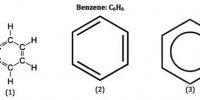These are of increasing importance because of their carbon neutrality. Examples include soybean oil, sunflower oil, palm oil and rapeseed oil (a.k.a canola oil). Spent cooking oil, an example of which is yellow grease, has also found application to fuel use. Some such oils can be used as fuels for compression ignition engines unprocessed; this is often true of soybean oil. More commonly treatment by esterification will be required to give a satisfactory cetane number. Physical properties of biodiesel fuels will be discussed in this chapter, starting with viscosity
Viscosity
The table below gives values from the recent literature of kinematic viscosities of biodiesel fuels.

Model compounds for biodiesels include methyl oleate, structural formula CH3 (CH2) 7CH = CH(CH2)7COOCH3. Its cetane number is 59, higher than that of a typical diesel, biodiesel or diesel-biodiesel blend. Its kinematic viscosity at 40oC is 4.5 cSt. As well as being a model compound, methyl oleate is an actual ingredient of many biodiesels as is methyl linoleate which features in the section 9.4. Its kinematic viscosity at 400 C is 3.65 cSt.












